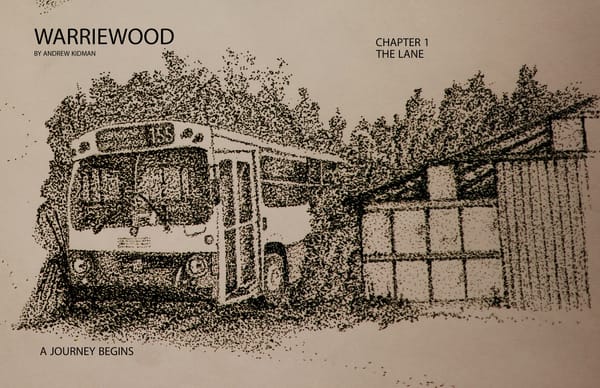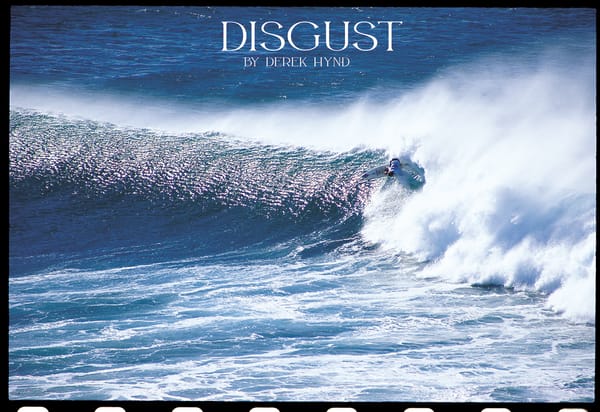There’s barely a break in development from Coolum to Cabarita. ‘It's going to look like California one day,’ says the driver. Concrete, industry, brick-veneer, shopping centres, roofs as far as the eye can see.
Stories
It was a typical summer Sunday at Warriewood Beach. The midday sun blazed down as the northerly airstream ripped across the surface of the ocean, anointing the air with the coolness of the sea.
It seemed he’d waited hours for this very moment. The man introduced himself as 'Nicko', he considered himself a local to the spot even after driving three hours to get here.
"He swung his board like an axe." This is how a reporter described the groundbreaking style of Australian surfer Nat Young. The year was 1966 and people were beginning to use shorter, lighter boards that made for more agile surfing, which this nineteen-year-old took to their upper limits.
Caleb despised taking the bus because he felt uncomfortable around other human beings. He preferred to walk home and daydream about the things he found in nature than deal with the incessant randomness of personalities.
Riding a pushie around the quiet, suburban streets of the Northern Beaches of Sydney in the early Eighties was a kid’s dream. There were no cops, no helmets, and there was none of the entitlement that comes with today’s giant SUV’s that choke the roadways in Australia.
There was no music in the house, just the constant hum of the ocean. Their home was built atop a cliff that reared out of the Tasman Sea on the Northern Beaches of Sydney.
Without mobile phones, internet, social media, or surveillance of any kind beyond some grumpy propertied white dude brandishing a rake because we did Berts on his driveway skateboarding down the sidewalk, we were free to be unique, separate, autonomous beings.
Back in 2021, Black Hole Transmissions correspondent Derek Hynd launched Hyndline. HyndLine was to be a series of 30 hand-shaped board models — or codes — representing 30 years of Hynd’s surfing progression from 1973-2003. 10 boards being shaped per code.
During the late 1970s and early 1980s, Cheyne Horan garnered acclaim as the messiah of a 'New Surfing' in a feature article by SURFING Magazine. Andrew Kidman engages in a rare interview with surfing visionary Cheyne Horan about surfing's evolution.
I wrote this book some years ago when I got sober. It was the first time I was able to write about the past with clarity. It’s a story about a boy that plays with flowers and can look into the sun without going blind. This is Chapter One.
It’s a blend of surprise and joy to encounter a young writer who can sketch a vivid mise-en-scène and be new enough to the craft to be an un-self-conscious narrator. Meet Joshua Hoffman, 23-years-old, who at 19 migrated in a rusty old van to the Tweed Shire from Adelaide.
Harken back to the close of pre-URL Hawaii. The Honolulu Advertiser comes to your house every day. No Craigslist, cell phones, webcams, or social media. Only landlines and the coconut wireless. You can see Israel Kamakawiwoole at the Waikiki Shell.
Herein, Black Hole Transmissions focuses on 1984. To wit: Mark Occhilupo's fall, and Cheyne Horan's rise, stemming from entwined negative and positive impacts in the same movement.
I flunked algebra in the 7th grade. The latest issue of Surfer Magazine fit neatly hidden behind my Introduction to Algebra textbook, and I was reading all about The Forgotten Island Of Santosha...
Andrew Kidman shares a personal philosophy of tending to sacred flames while exploring the profound connection between fire, trees, and the echoes of nature.
















